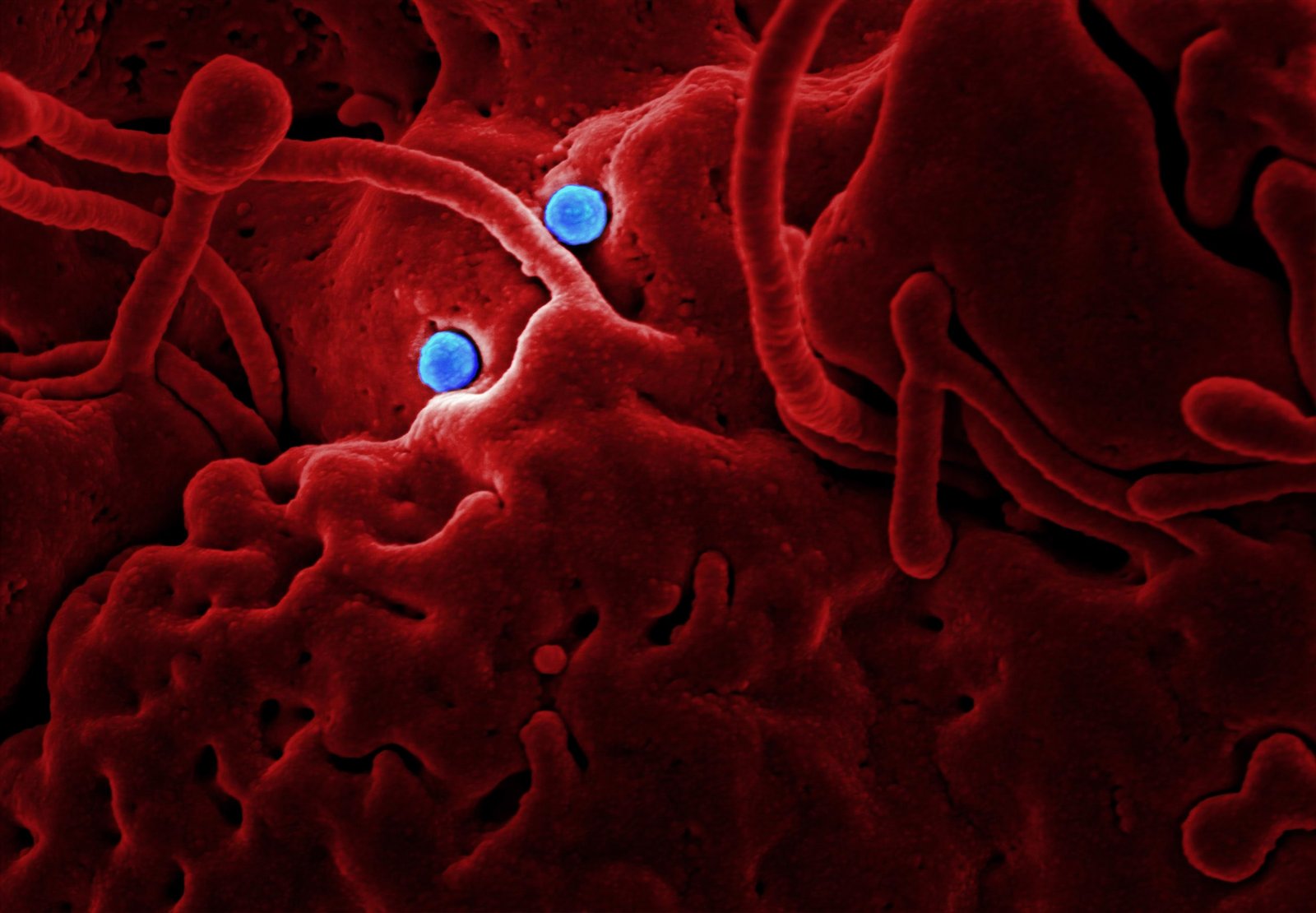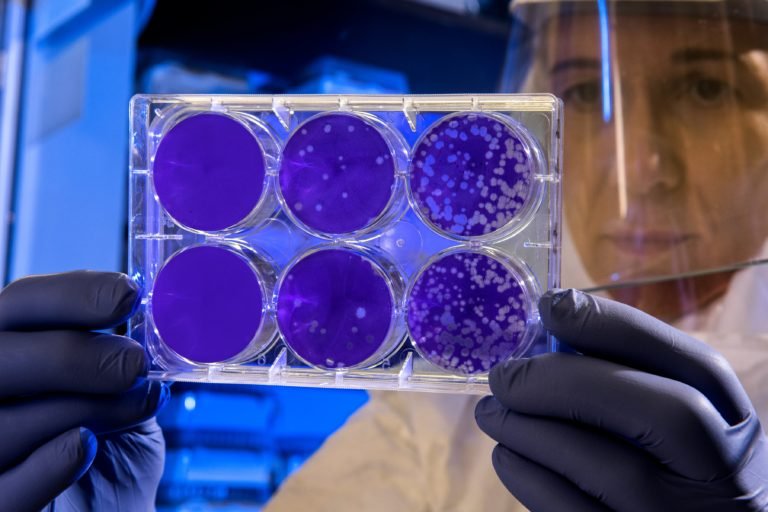Viruses – WAY more important than you thought!
Influenza. SARS. Ebola. MERS-CoV. Zika. Polio. Smallpox. We are used to thinking about viruses as human pathogens – many of them deadly. But is there a hidden yet important part of the viral story that we don’t appreciate? For instance, have you ever thought seriously about where the first virus came from? What a virus actually is? Whether viruses are “good” or “bad”. And why we need them, anyway?
Viral Origins
As you know, viral particles – or virions – are little parcels of genetic code that need to enter and hijack a host cell in order to replicate. But this begs the question – if a virus needs a host cell to reproduce itself, how did the first viruses evolve?
There are several competing – and at the moment equally plausible – explanations. One issue is that there are no known viral fossils – and given their tiny size and lack of hard body parts, this deficit is unlikely to be corrected anytime soon. One relatively recent discovery does fill in some of the gaps in the viral family tree, however, as some relatively ancient viruses have been found in thawing permafrost, allowing scientists to estimate how quickly viral genomes change. On a related-note, these ancient virions are still able to cause infection – although not currently in humans.
One of the competing theories is that viruses evolved as free-living, and self-replicating, entities that did not need to infect a host cell to perpetuate themselves. The recent discovery of very large viruses, with an almost complete collection of protein synthetic genes and mechanisms, supports this hypothesis.
Genetic studies showing that viruses do not have a single common ancestor, but evolved independently, support this hypothesis. But it also suggests an alternative – that viruses co-evolved with their host cells – probably in the primordial oceans that are almost certainly where life began. A paper published earlier in 2018 supports this theory, as it found traces of very old RNA viruses in the genomes of 186 vertebrate species, including so-called primitive animals like lungfish.
A third hypothesis is that viruses initially evolved within cells as a separate piece of genetic material (perhaps similar to plasmids), but somehow managed to escape and survive as free-living entities.
A final theory is that viruses are extra-terrestrial – that they somehow evolved independently of cells elsewhere in our solar system – perhaps Mars – and were seeded here in primordial times. While there is no current evidence to support this hypothesis, the field of astrovirology is certainly looking.

What IS a virus?
While the virus particle may fall short of the definition of life depending on the criteria used, for some virologists, thinking of the virion as the “virus” is like calling a sperm or unfertilised egg a “person”. Sure, a sperm is an essential step towards creating a person, but few people would argue that a sperm or unfertilised egg should be described as the finished product (Edward Emmott).
In this article, Edward Emmott (Virology Researcher at the University of Cambridge) argues that a virus is much more than just the viral particles – or virions – that encapsulate the viral genetic material and transmit infection from one host to another.
In an argument reminiscent of French philosopher Jacques Ellul (who argued that a nuclear weapon is not just a couple of kilograms of plutonium, but the scientific and cultural system that allows it to be developed and potentially used in the first place), Emmett contends that a “virus” is the infected cell, rather than the virion. Taken even further (along Ellul’s line of reasoning), a “virus” is not just the infected cell, but the symptoms caused by infection (many of which in turn are due to the host’s immune response), the mode of transmission, patterns of infection, burden of illness and even the societal response to the illness – in other words the disease rather than the virion. But regardless of how you define them, are viruses good, bad or otherwise?

Are viruses “good” or “bad”?
But the 21 viral types that wreak havoc with the human body represent an insignificant fraction of the 100 million viral types on earth. Most viruses are actually vital to our very existence. No-one seems to stick up for the good guys that keep ecosystems diverse and balanced – The sheer number of these good viruses is astonishing. Their concentration in a productive lake or river is often 100 million per millilitre – that’s more than four times the population of Australia squeezed into a ¼ of a teaspoon of water (Peter Pollard).
As Peter explains in his TEDx talk, freshwater viruses make carbon and other inorganic nutrients available to the primary producers (plants and algae) in aquatic ecosystems. After terrestrial nutrients enter our waterways, they initially promote bacterial growth. Unfortunately for the bacteria (but ultimately fortunately for us), viruses rapidly infect and destroy them, causing the release of trapped nutrients back into the water. These released inorganic nutrients (like carbon and phosphorus) then fuel plant and algal growth, thereby promoting healthy ecosystems.
Why we need viruses (in the past, present and future)
After being considered non-living and relegated to the wings by most biologists, viruses are now center stage: they might have been there at the origin of DNA, might have played a central role in the emergence of the eukaryotic cell, and might even have been the cause of partitioning of biological organisms into the three domains of life: Bacteria, Archaea and Eukarya (Jean-Michel Claverie).
Viral Eukaryogenesis
Some lines of research suggest that viruses are ultimately responsible for the structure of modern mammalian (eukaryotic) cells. It is known that, upon infecting a bacterium, viruses destroy the bacterial DNA and replace it with their own. New research shows that the form taken by this newly-formed nucleus of viral DNA is very similar in structure to mammalian cells, suggesting that viruses may have been crucial in the evolution of higher-order organisms. There is also increasingly-convincing evidence that the partitioning of life into the three great domains is related to the crucial role of viruses in the evolution of life.
Endogenous Retroviruses (ERVs)
Edward Emmott (discussed above) also points out that human DNA contains many virus-derived genes – some of them essential for our survival. The concept is that, multiple times in deep history, retroviral genes were inserted into human germ cells (ova and sperm) – thereby allowing these genes to be inherited. Rather than causing infection, these genes are beneficial to us. The example he gives is of Syncytin-1, a retrovirus-related gene essential to normal development of the placenta, that our ancestors acquired approximately 24-million-years ago.
I must admit that researching this blog post opened my eyes to many new and interesting findings about the virosphere – even though I thought I was relatively well-informed – I’ve only just scratched the surface really! Click the links throughout the post to learn more, and in particular the role that viruses played in the deep past is covered well in this National Geographic article. The information and links related to viral origins is based on a piece published over at The Conversation. The importance of viruses to evolution is largely based on the report Viruses Throughout Life & Time: Friends, Foes, Change Agents from The American Academy of Microbiology.









